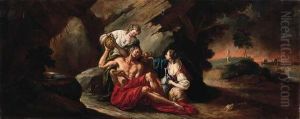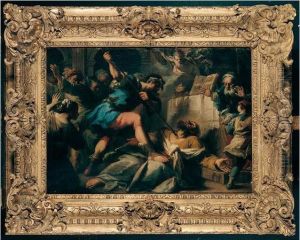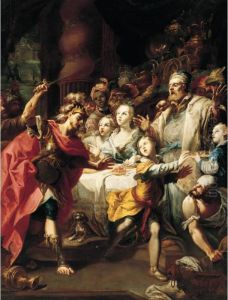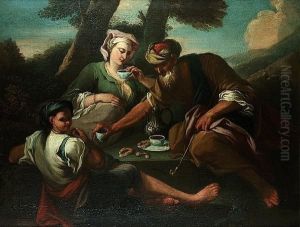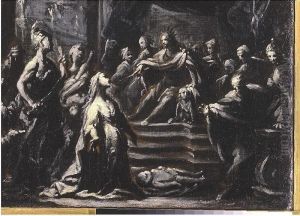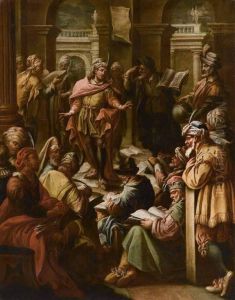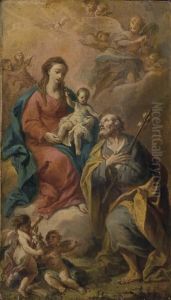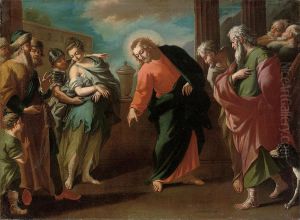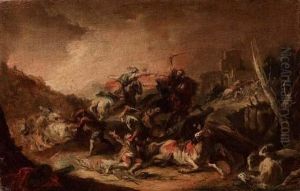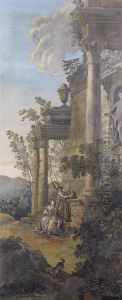Nicolas Bertuzzi L'Anconitano Paintings
Nicolas Bertuzzi, also known as Niccolò Bertuzzi or simply L'Anconitano due to his origin from Ancona, Italy, was an 18th-century Italian painter. Born in 1710, Bertuzzi was primarily known for his work in the Rococo style, which was popular in Europe during the time.
Bertuzzi's early life and training are not thoroughly documented, but like many artists of his era, he likely underwent an apprenticeship under a local master to learn the fundamental techniques of painting. The cultural climate of Italy during this period was vibrant, with the artistic legacy of the High Renaissance still resonating and the Baroque style having recently set the stage for the lighter and more playful Rococo movement that would dominate much of the 18th century.
During his career, Bertuzzi worked on various religious and decorative commissions. He was particularly adept at creating frescoes, a skill highly regarded in Italian art circles. Frescoes are a demanding medium, as they require the artist to work rapidly to apply pigment to wet plaster, leaving little room for error. Bertuzzi's work in this medium demonstrates both technical skill and a flair for the theatricality that was often sought after in the decoration of churches and palaces of the time.
Not much is known about Bertuzzi's personal life or his patrons, but it can be assumed that he worked for the church and local aristocracy, as these were the primary sources of patronage for artists in Italy during the 18th century. He would have been part of a larger artistic community, competing for commissions and participating in the rich exchange of ideas and techniques among his contemporaries.
Nicolas Bertuzzi passed away in 1776, leaving behind a body of work that, while it may not have garnered him the fame of some of his contemporaries, contributed to the rich tapestry of Rococo art in Italy. His works are a testament to the era's artistic trends and the skills of a capable painter who was able to capture the spirit of his time.
